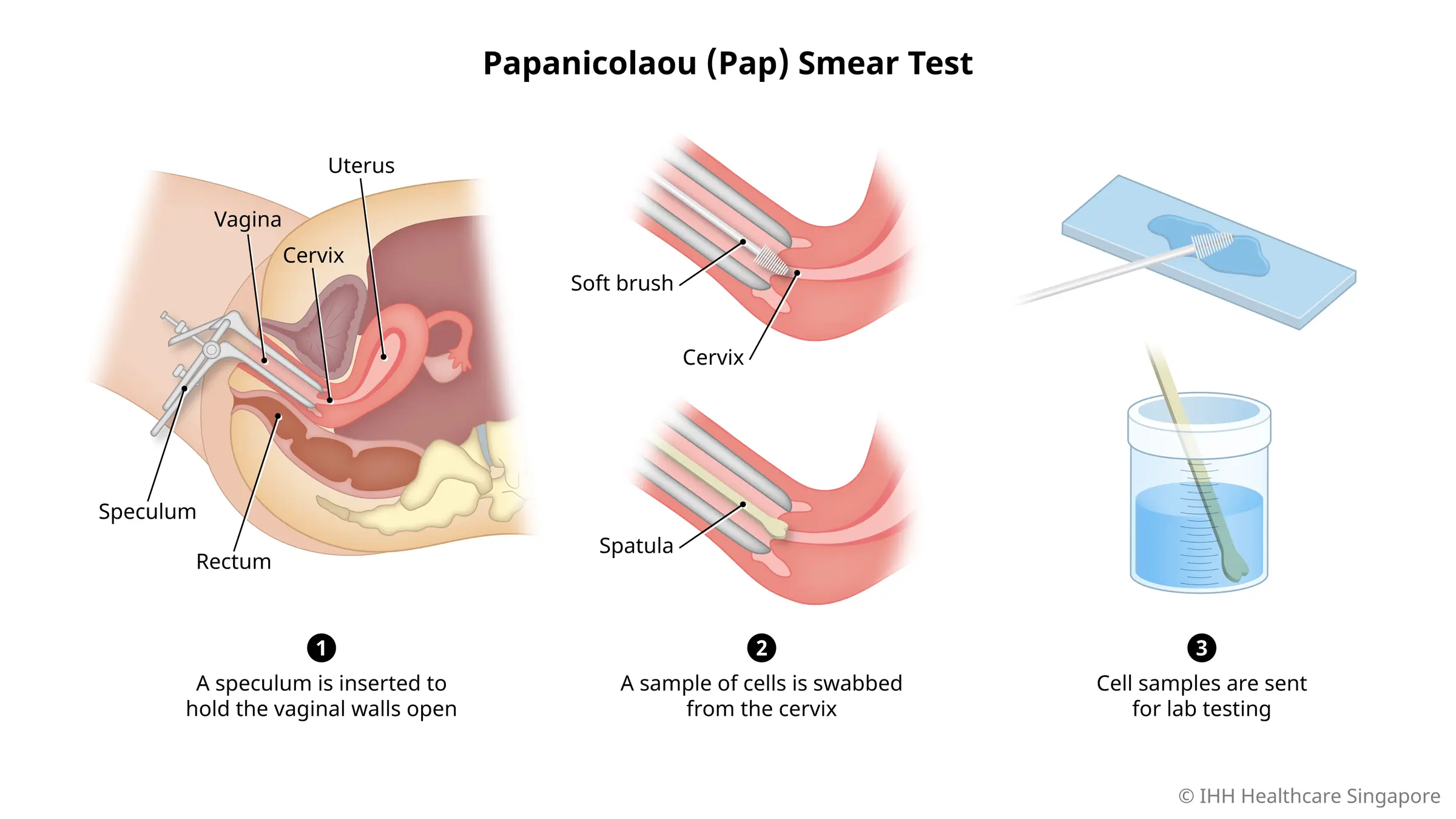What is a Papanicolaou (Pap) smear test?
A Pap smear involves taking cells at the neck of the womb, located at the end of the vagina. These cells can be abnormal without symptoms in patients having precancer of the cervix, and this method allows prevention of cervical cancer by detecting precancerous changes.
The Pap smear is usually done in conjunction with a pelvic exam.
A Pap smear test is recommended once every 3 years for women above the age of 25 – 29.
For women over the age of 30, a HPV test is also recommended once every 5 years. Together, these test help in the early detection of cervical cancer.
Why do you need a Pap smear?
A Pap smear test is done to look for changes in cervical cells before they turn into cancer.
Early detection greatly improves the chances of successful treatment of pre-cancers and cancer.
If you have certain risk factors, your doctor may recommend more-frequent Pap smears, regardless of age. These risk factors include:
- A diagnosis of cervical cancer or a Pap smear that showed precancerous cells
- A history of smoking
- Exposure to diethylstilbestrol (DES) (a synthetic form of oestrogen) before birth
- HIV infection
- Weakened immune system due to organ transplant, chemotherapy or chronic corticosteroid use
Cervical cancers almost always develop in patients who have had sexual contact. Hence, patients who have never had sex before need not go for Pap smears.
However, if there are any gynaecological symptoms such as abnormal bleeding or discharge, they should still consult a gynaecologist.
What are the risks and complications of a Pap smear?
A Pap smear is a safe way to screen for cervical cancer, but it cannot detect cancer 100% of the time.
It is possible to get false-negative results, which means the test indicates no abnormality, even though there are abnormal cells.
A false-negative result can be due to:
- An inadequate collection of cells
- A small number of abnormal cells
- Blood or inflammatory cells obscuring the abnormal cells
Even though abnormal cells can go undetected, time is on your side because cervical cancer takes several years to develop. This is why regular tests are important to pick up any changes. If one test does not detect the abnormal cells, the next test most likely will.
How do you prepare for a Pap smear?
To ensure that your Pap smear is most effective:
- Avoid intercourse or use lubricants at least 2 days before the test
- Do not apply sprays or powders near the vagina
- Do not insert anything into the vagina, including tampons, medications, creams or suppositories
- Do not rinse the vagina with water, vinegar, or other fluids (douche)
- Try not to schedule a Pap smear during your period as bleeding can affect the accuracy of the test
What can you expect in a Pap smear?

A Pap smear test is done in your doctor's clinic. The test doesn’t hurt, but you may feel a little pinch or a bit of pressure. You will be able to carry on with your regular activities afterwards.
Estimated duration
A Pap smear test takes about 5 – 10 minutes.
During the procedure
You may be asked to undress completely or only from the waist down and lie on a table with your feet in stirrups.
- Your doctor will insert a metal or plastic tool (speculum) into the vagina to widen the vaginal walls and allows a clear view of the cervix.
- Using a soft brush and a flat scraping device called a spatula, some cells will be removed from the cervix.
- The sample will be sent for testing and analysis.
After the procedure
After your Pap smear, you can go about your day without restrictions.
Your doctor will notify you about the test results.
Abnormal results
A positive result occurs when abnormal or unusual cells were discovered during your Pap smear.
About 10% of all Pap tests can show some abnormality.
Sometimes infection, inflammation or even dry skin due to menopause can make the cells hard to interpret and require a repeat testing or referral to a gynaecologist.
The classification of the abnormalities in the report will allow your doctor to triage you for either observation or referral to a gynaecologist for further investigation.
If precancerous changes are suspected, your doctor will recommend a colposcopy. During the colposcopy, they will examine the cervix using a magnifying device and apply medication on the cervix so they can better see the precancerous area. Biopsies and treatment may be offered if there are abnormalities seen.
Normal results
A negative result occurs when normal cervical cells were discovered during your Pap smear.
This means no precancerous or cancerous cells were detected in the sample.
You will not need any further treatment or testing until the next Pap smear and pelvic exam.









